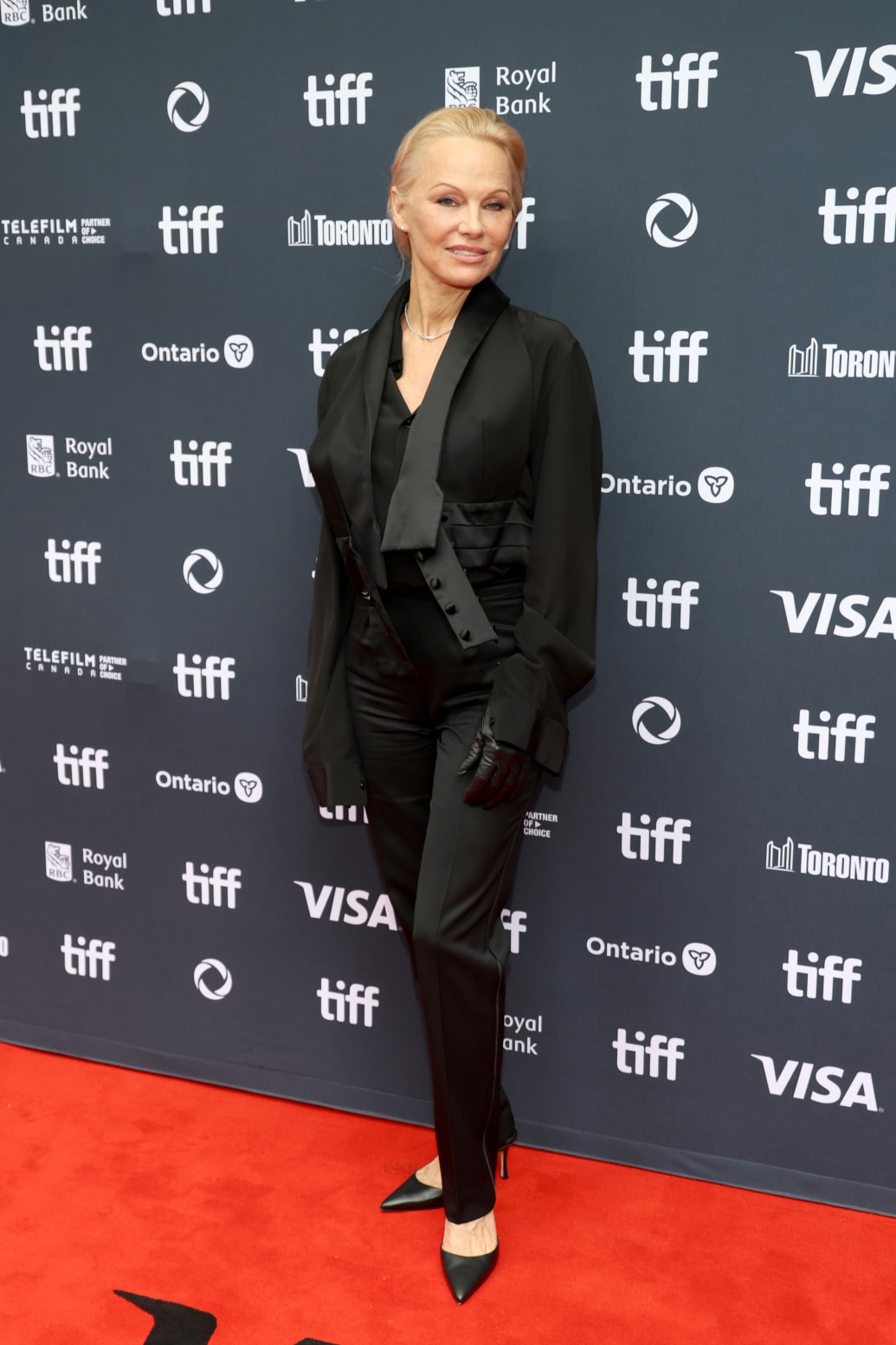TORONTO, Canada—Just as The Wrestler gave Mickey Rourke one last shot at big-screen stardom (and Oscar gold) via the role of an aging entertainer struggling to make a comeback, so too does The Last Showgirl bestow Pamela Anderson with an opportunity to demonstrate her bona fide acting chops by playing an over-the-hill Las Vegas dancer facing impending irrelevance.
In both cases, the films hinge on the echoes between the protagonists’ and headliners’ pasts and presents, but the difference is that Rourke was once a great actor and Anderson was, well, not, and that unfortunately continues to be the case with Gia Coppola’s indie. Premiering at the Toronto International Film Festival, the writer/director’s third feature is a shallow and slender tale of lousy dreams, worse decisions, and painful regrets, all of it predicated on a lead turn that’s too one-note to wow.
Shelley (Anderson) is 57 years old and still participating in “Le Razzle Dazzle,” a revue at an unnamed Vegas casino that requires her to wear a classic showgirl costume decorated with kitschy rhinestones and feathers. Five seconds spent in her bustling dressing room is enough to convey that she’s decades older than her fellow dancers, two of whom, Marianne (Brenda Song) and Jody (Kiernan Shipka), are her friends.
So too is Annette (Jamie Lee Curtis), a brash cocktail waitress whose cleavage is always on prominent display and whose face and hair are done up in the gaudiest way imaginable. Together, they’re a ragtag family, and Kate Gersten’s obvious script articulates that idea during an early get-together, along with the related fact that Jody actively views Shelley as a mother figure.
Pamela Anderson on the red carpet at TIFF
Kayla Oaddams/Getty Images
Shelley actually is a mom, to Hannah (Billie Lourd), although their relationship has long been severed, with the girl having been raised by her father and his new wife in New York. It doesn’t take a detective to figure out that this state of affairs is Shelley’s fault, given that she can’t even accomplish the simplest tasks without trouble, such as scanning groceries at the self-checkout, opening her car door, or avoiding ripping her giant wings on a pesky door handle.
She’s a wreck, and thus when she gets word that the latest guy to ask her out on a date has stood her up, it comes across as merely one more disappointment in a life overflowing with them. In the wake of this disappointment, she gets together and boozes it up with her pals as well as stage manager Eddie (Dave Bautista), and that goes no better, since Eddie has news: “Le Razzle Dazzle” is closing, set to be replaced by a popular pornographic circus act.
The Last Showgirl wallows in the ramshackle messiness and garishness of its on-the-fringe milieu, letting Curtis devour scenery with such gusto that Anderson and company are initially left with little to chew. It’s a flamboyantly ugly performance that’s emblematic of the entire endeavor, which gazes at outdated Vegas statues, fake eyelashes in the sink, and hair rollers on the counter as a means of romanticizing the downtrodden and decrepit.
Despite handheld camerawork that strives for verité immediacy, the film’s gaze feels like that of a tourist. Not helping matters in that regard is a narrative held together by clichés, including Hannah’s sudden appearance on Shelley’s doorstep, thereby instigating a desperate attempt by the unhappy mother to mend fences.
In their first conversation in a year, Hannah informs Shelley that she’s studying to be a photographer. When Shelley tries to encourage that path by likening them as kindred artists, it immediately sours the reunion, once again leaving Shelly alone. The root of their problems, it’s eventually revealed, is that Shelley abandoned Hannah (and her first husband) in order to concentrate on a career that, at the time, was skyrocketing, such that she traveled around the world as an “ambassador” for Sin City and was (and still is) featured on promotional items as the face of “Le Razzle Dazzle.”
That Coppola conspicuously avoids depicting the revue is a red flag that Shelley was always a talentless pin-up, and it’s only a matter of time before the film is stating out loud that she threw away her loved ones (and any reasonable future) for nothing.
The Last Showgirl wouldn’t exist without Anderson, whose real-world fate as a sex symbol who was looked down upon and discarded once she reached a certain age is what purportedly gives it heft—as does the notion that, with this performance, she’s proving her naysayers wrong in a way that Shelley cannot. Anderson, however, does little more than inhabit the character as frantic, delusional, and pitiful.
Multiple shots of her walking outside, the magic-hour sunlight glaring into Coppola’s lens, cast her as a beautiful disaster. Yet there’s nothing to Shelley but her increasingly wrinkled surface, and her inability to recognize that doesn’t rise to the level of tragedy. It also fails to resonate as a commentary on sexism, ageism, and the downside to the American Dream; instead, it’s simply a sign of her vacuousness.
Shelley is a never-was who clings to fantasy: that “Le Razzle Dazzle” is a higher-class operation than its sleazy competitors (because it’s French!); that she’s a skilled dancer; and that her daughter might be proud of her profession, or at least understand why she chose it over their life together. Considering that all of this is apparent from the first 20 minutes, though, The Last Showgirl can only proceed into foreseeable territory chockablock with copious weeping, fighting, betrayals and unaccepted apologies.
Staring into an unknown future, she takes Annette’s advice and goes on a date with Eddie that results in further revelations about her topsy-turvy past, but there’s no savior on the horizon for Shelley, whom Coppola envisages as an empathetic lost soul destined to continue her downward spiral.
The Last Showgirl primarily cares about music video-ish snapshots of grief and misery, lowlighted by Annette doing a sultry solo dance number in a casino to “Total Eclipse of the Heart” while a distraught Shelley wanders the Strip at sunset. Its every gesture is a pose, as affected and unrewarding as the pathetic moves that Shelley displays during a disastrous audition, and its compassion for her is, ultimately, unearned.










